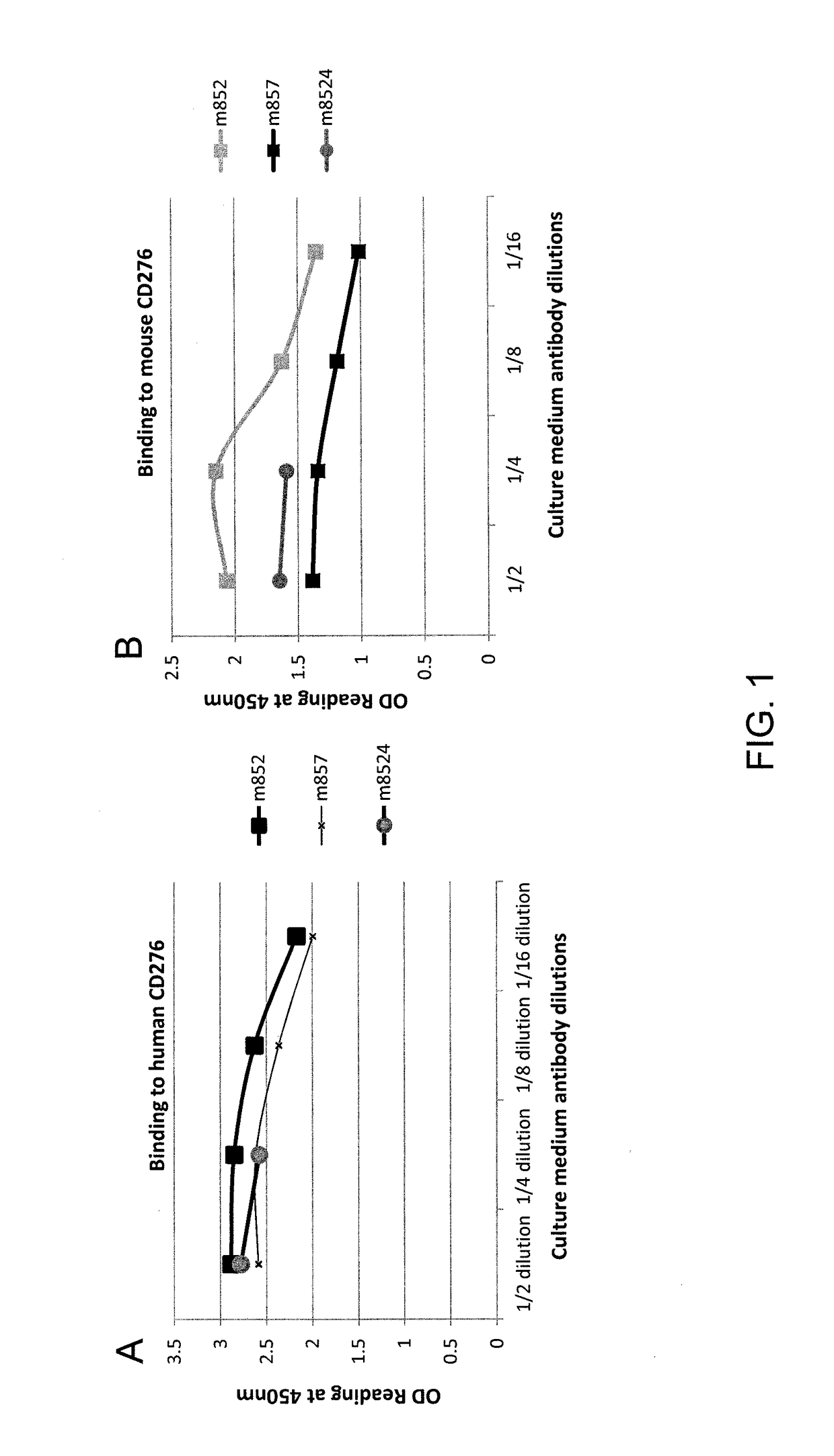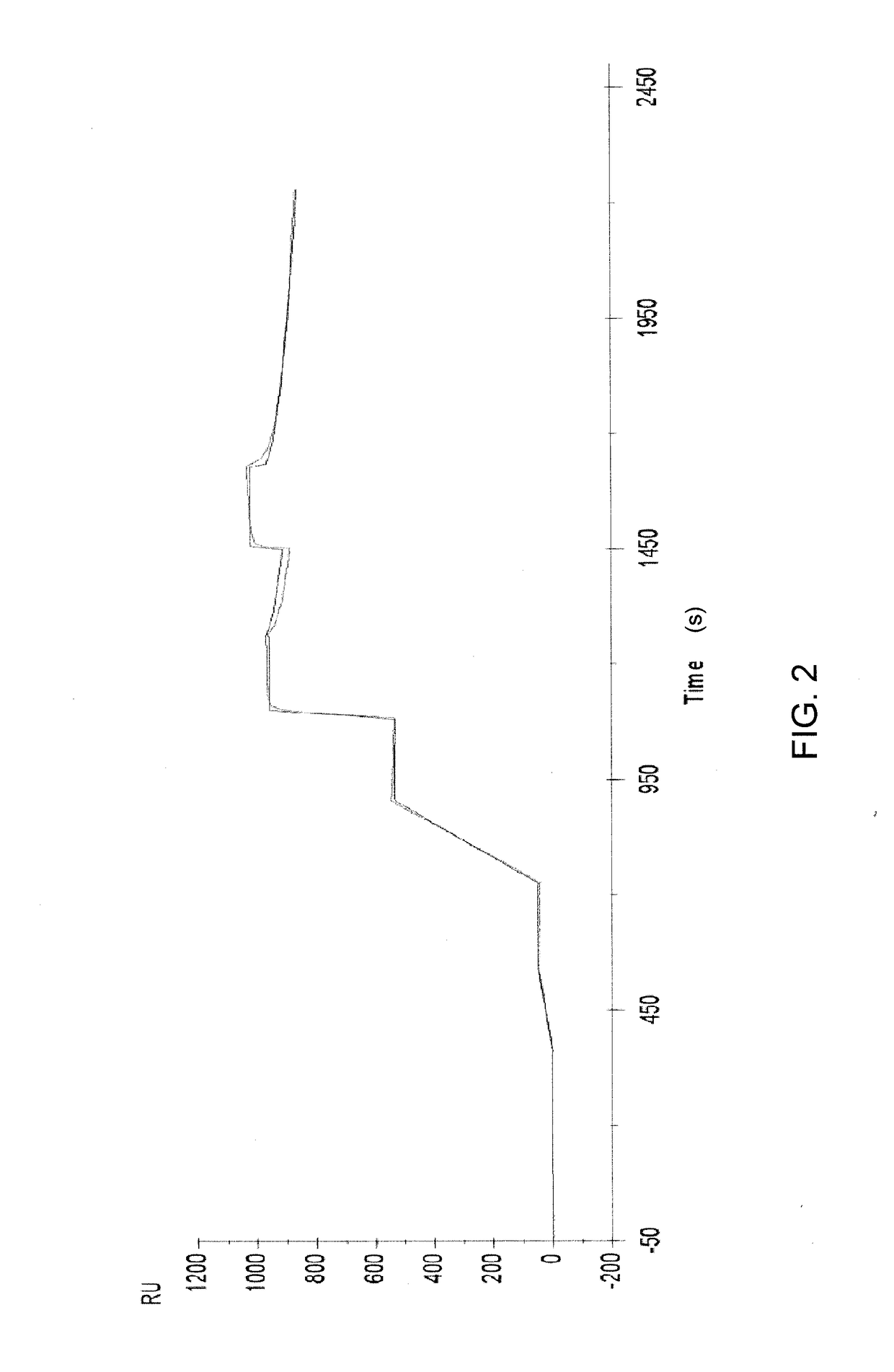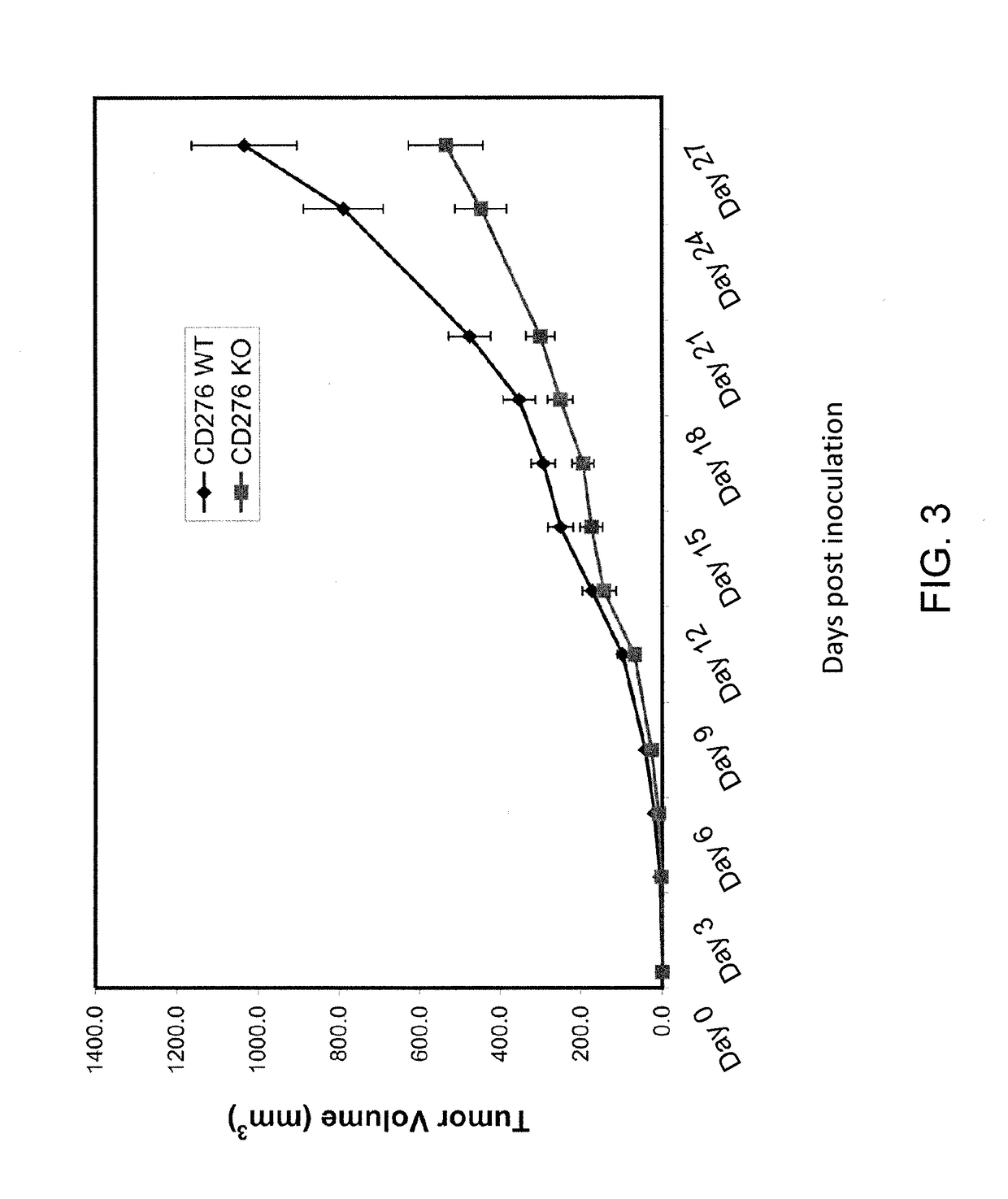Anti-cd276 antibodies (B7H3)
a technology of anti-cd276 and antibodies, applied in the field of anti-cd276 antibodies (b7h3), can solve the problems of poor prognosis of many cancers, including solid tumors, and achieve the effect of improving the prognosis
- Summary
- Abstract
- Description
- Claims
- Application Information
AI Technical Summary
Benefits of technology
Problems solved by technology
Method used
Image
Examples
example 1
[0143]This example demonstrates the identification, purification, and characterization of anti-CD276 binding domains.
Yeast Display Naïve Human Antibody Library, Antibodies, Biotinylation Kit, Cells
[0144]A large yeast display naïve single chain variable fragment (scFv) human antibody library was constructed using a collection of human antibody gene repertoires, including the genes used for the construction of a phage display Fab library (Zhu et al., Methods Mol. Biol., 525: 129-142, xv (2009)).
[0145]Mouse monoclonal anti-c-Myc antibody was purchased from Roche (Pleasanton, Calif.). PE-conjugated streptavidin and Alexa-488 conjugated goat anti-mouse antibody were purchased from Invitrogen (Carlsbad, Calif.). Protein G columns were purchased from GE healthcare (Waukesha, Wis.). Avi-tag specific biotinylation kits were purchased from Avidity (Aurora, Colo.). Yeast plasmid extraction kits were purchased from Zymo Research (Irvine, Calif.). 293 free style protein expression kits were purc...
example 2
[0153]This example demonstrates that the growth of subcutaneous HCT116 human colon xenograft tumors is impaired in CD276 knockout (KO) mice.
[0154]Wild-type (WT) and CD276 KO mice were inoculated with HTC116 human colon tumor cells and the tumor volume was measured about every three days over a period of about one month following inoculation. The results are shown in FIG. 3. As shown in FIG. 3, the growth of subcutaneous HCT116 human colon xenograft tumors is impaired in CD276 KO mice.
example 3
[0155]This example demonstrates the binding of the anti-CD276 scFv-Fc m8524 (m276) to mouse and human CD276 expressed on a cell surface.
[0156]Chinese hamster ovary (CHO) cells were untransduced or transduced to express mouse CD276 or human CD276. The cells were cultured with 1 μg / 100 μl of the anti-CD276 scFv-Fc m8524 (m276) (SEQ ID NOs: 26 and 27) (primary antibody) and fluorescein isothiocyanate (FITC) Gt anti-human antibody (H+L) (as a secondary antibody). The binding of the anti-CD276 scFv-Fc m8524 (m276) to mouse or human CD276 expressed on the cell surface was measured by flow cytometry. The results are shown in FIG. 4. As shown in FIG. 4, the anti-CD276 scFv-Fc m8524 (m276) bound to mouse and human CD276 expressed on the cell surface.
PUM
 Login to View More
Login to View More Abstract
Description
Claims
Application Information
 Login to View More
Login to View More - R&D
- Intellectual Property
- Life Sciences
- Materials
- Tech Scout
- Unparalleled Data Quality
- Higher Quality Content
- 60% Fewer Hallucinations
Browse by: Latest US Patents, China's latest patents, Technical Efficacy Thesaurus, Application Domain, Technology Topic, Popular Technical Reports.
© 2025 PatSnap. All rights reserved.Legal|Privacy policy|Modern Slavery Act Transparency Statement|Sitemap|About US| Contact US: help@patsnap.com



